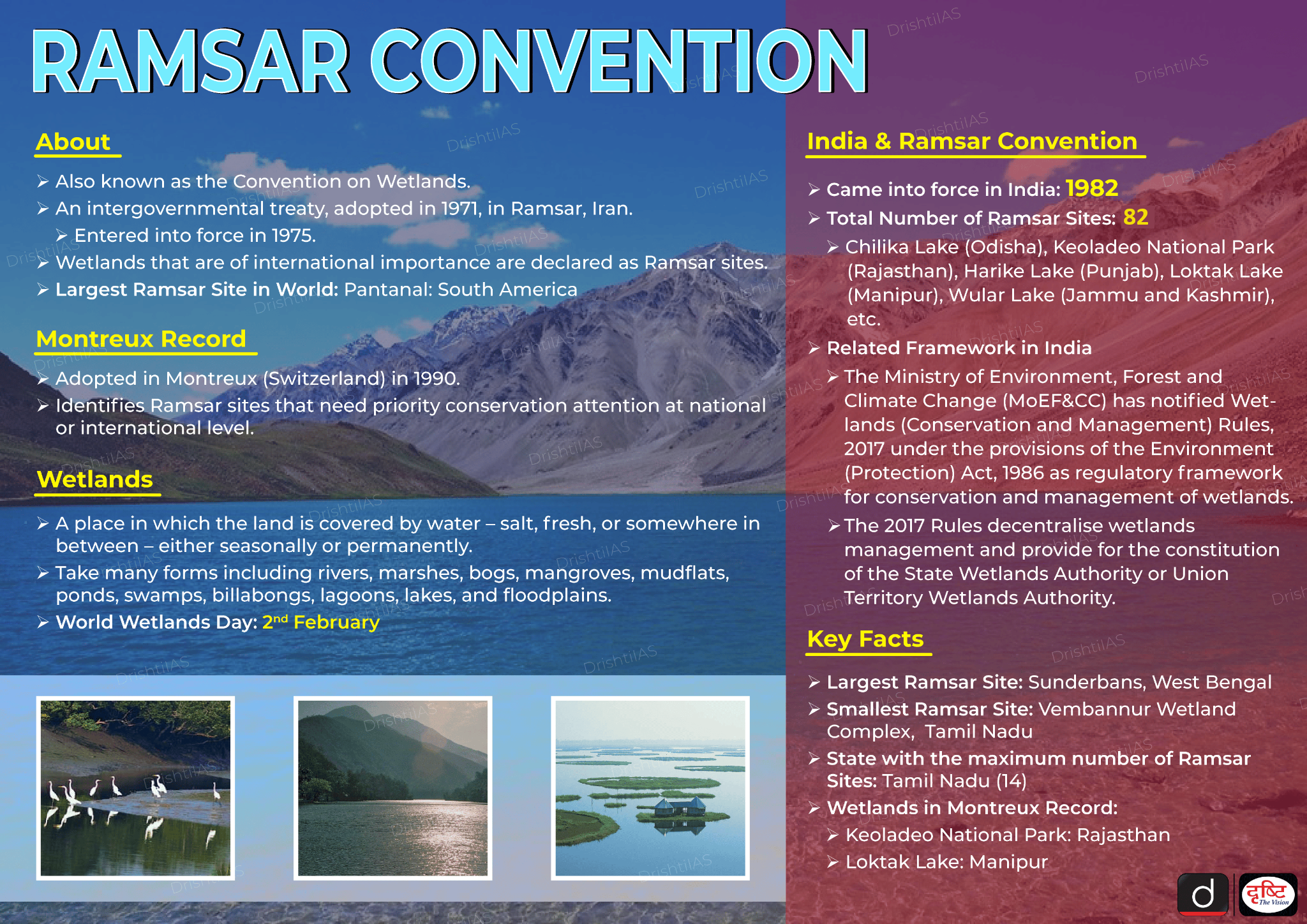Important Facts For Prelims
Nagi and Nakti Bird Sanctuaries Recognised as Ramsar Sites
- 08 Jun 2024
- 4 min read
Why in News?
Recently, on World Environment Day, the Nagi and Nakti Bird Sanctuaries in Bihar have been recognised as wetlands of international importance under the Ramsar Convention.
- This brings the total number of such wetlands in India to 82.
What are the Key Characteristics of Nagi and Nakti Bird Sanctuaries?
- Geographical Setting:
- Both the bird sanctuaries are built on human-made wetlands primarily developed for irrigation through the construction of the Nakti Dam.
- Both sanctuaries were designated as Bird Sanctuaries in 1984 due to their importance as wintering habitats for migratory species.
- The catchment area features dry deciduous forests surrounded by hills.
- Both sanctuaries were designated as Bird Sanctuaries in 1984 due to their importance as wintering habitats for migratory species.
- Flora and Fauna:
- These wetlands provide habitats for over 150 species of birds, mammals, fish, aquatic plants, reptiles, and amphibians.
- They host globally threatened species such as the endangered Indian elephant and the vulnerable native catfish.
- According to the Asiatic Waterbird Census 2023, the Nakti Bird Sanctuary reported 7,844 birds, the highest in the survey, followed by the Nagi Bird Sanctuary with 6,938 birds.
Note:
- The Kanwar Lake in Bihar's Begusarai district was designated as the state’s first Ramsar Site in 2020.
What is the Ramsar Convention?
- The Ramsar Convention is an international treaty signed in 1971 in Ramsar, Iran, under the auspices of UNESCO, aimed at conserving wetlands of international importance.
- In India, it came into force on 1st February 1982, under which wetlands of international importance are declared as Ramsar sites.
- Montreux Record is a register of wetland sites of International Importance where changes in ecological character have occurred, are occurring, or are likely to occur as a result of technological developments, pollution or other human interference.
- It is maintained as part of the Ramsar List.
Note
- World Wetlands Day is celebrated every year on the 2nd February across the globe.
- India’s Initiatives for Ramsar Sites:
- National Wetland Conservation Programme (NWCP): It was launched in 1985, to tackle threats to vulnerable wetland ecosystems and enhance their conservation.
UPSC Civil Services Examination, Previous Year Question (PYQ)
Prelims:
Q. Consider the following pairs: (2022)
Wetland/Lake Location
- Hokera Wetland : Punjab
- Renuka Wetland : Himachal Pradesh
- Rudrasagar Lake : Tripura
- Sasthamkotta Lake : Tamil Nadu
How many pairs given above are correctly matched?
(a) Only one pair
(b) Only two pairs
(c) Only three pairs
(d) All four pairs
Ans: (b)
Q. Consider the following pairs: (2014)
Wetlands Confluence of rivers
- Harike Wetlands : Confluence of Beas and Satluj/Sutlej
- Keoladeo Ghana : Confluence of Banas National Park and Chambal
- Kolleru Lake : Confluence of Musi and Krishna
Which of the above pairs is/are correctly matched?
(a) 1 only
(b) 2 and 3 only
(c) 1 and 3 only
(d) 1, 2 and 3
Ans: (a)






